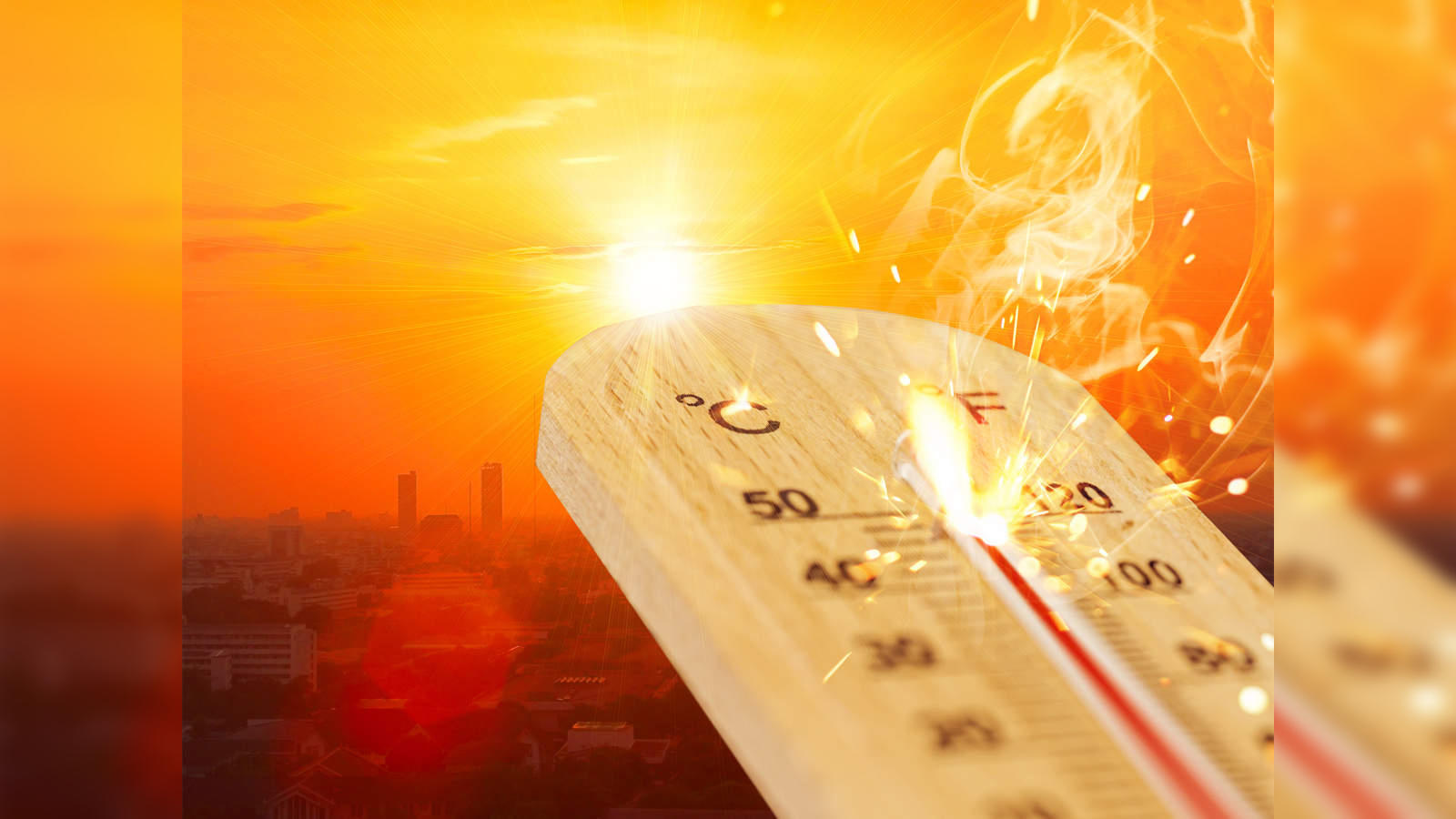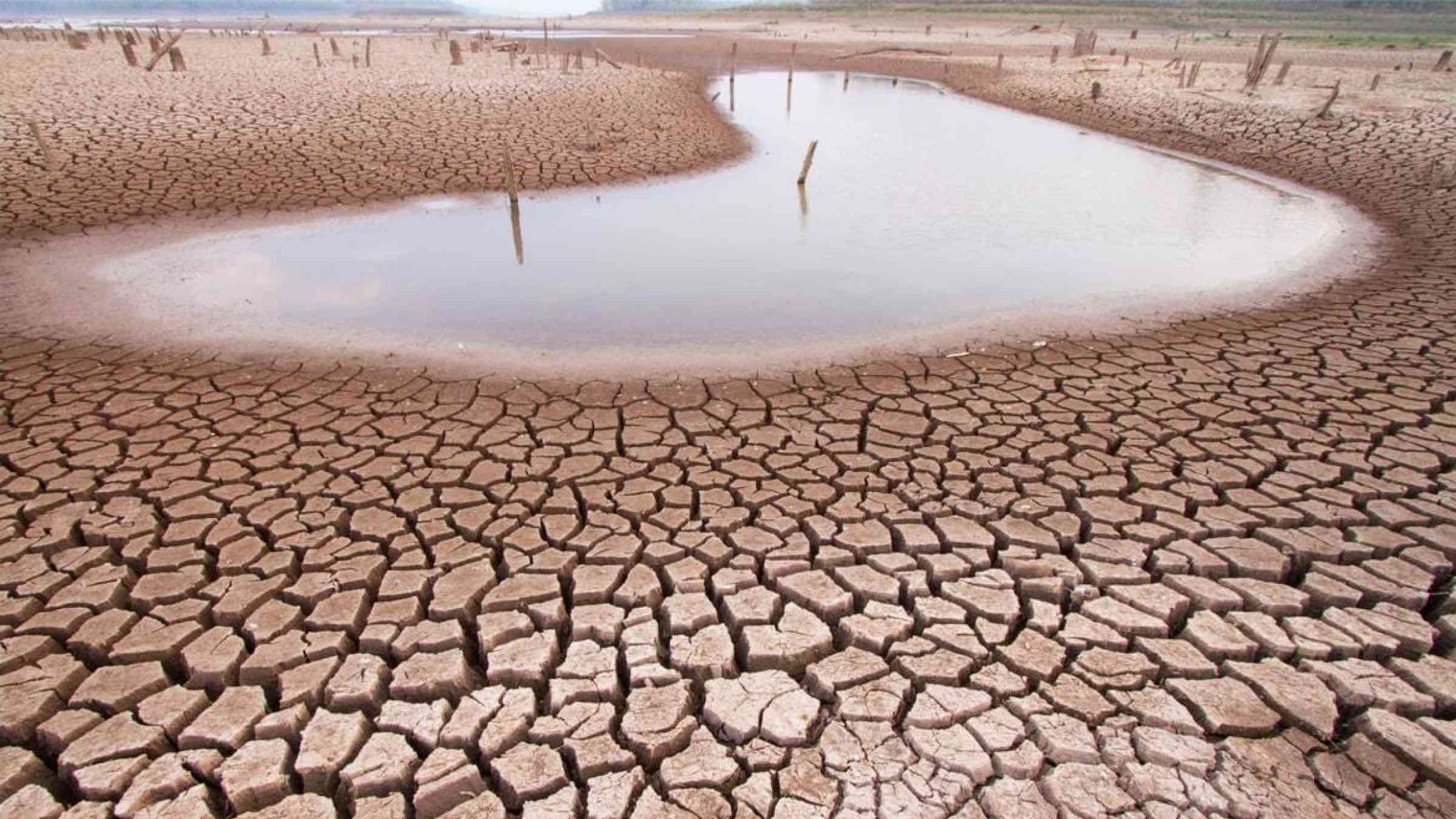The Heatwave Crises: Did Delhi Record 52.3 Degrees C? Are Indians Succumbing To High Temperatures? Will India See More Heatwave Days Going Forward? Are Climate Change Predictions Real?

Delhi is sweltering, and how the temperature in Delhi on Wednesday was 52.9 degrees Celsius; however, even as people feel the heat, according to IMD Director General M Mohapatra, the India Meteorological Department (IMD) is inspecting the temperature sensor at Delhi’s Mungeshpur automatic weather station to make sure it is functioning correctly.
“It is not official yet. A temperature of 52.3°C in Delhi is very unlikely. Our senior officials in IMD have been asked to verify the news report. The official position will be stated soon,” Kiren Rijiju said in a statement on social media platform X.
Whatever the case, even if the temperature sensors are wrong, the fact is that temperatures have been hovering between 45.2 and 49.1 degrees Celsius in different parts of the city, and needless to say, that is very hot!
) The Endless Heatwave
The Endless Heatwave
The India Meteorological Department (IMD) has issued a red alert for Rajasthan, Delhi, Punjab, Haryana, Chandigarh, and Madhya Pradesh, indicating a severe heatwave crisis.
A red alert means a “very high likelihood” of individuals developing “heat illness and heat stroke” and necessitates “extreme care” for vulnerable populations.
This warning follows a day of record-breaking temperatures. The mercury exceeded 50 degrees Celsius in Rajasthan’s Churu and Haryana’s Sirsa, while Delhi experienced temperatures nine degrees above normal.
The IMD expects relief from the heatwave after May 30.
However, with record temperatures, one wonders how many Indians are succumbing to the heatwave. Are we even recording the number of deaths related to the heatwave?
To put it into perspective, according to data from the National Centre for Disease Control (NCDC), as quoted by Livemint, India has recorded 60 heat-related deaths since March 1.
The Numbers
Across the country, 32 people have died due to heatstroke, and another 28 deaths are suspected to be caused by heatstroke.
In fact, on May 22 alone, government data revealed that two people in Andhra Pradesh and Rajasthan’s Kota died of suspected heatstroke.
Since March 1, there have been 16,344 suspected heat stroke cases, 486 of which were reported on May 22 alone.
However, experts believe the actual numbers may be significantly higher.
A senior official from the IMD said, “During the heat spells, the relative humidity in coastal areas over east India was well over 50 per cent and over northwest India, around 20-30 per cent. Humid heat can have severe health impacts, and we fear that many people may have been impacted.”
 Impacting Health
Impacting Health
According to experts, there are two types of heatwave deaths: exertional, caused by exertion in direct sunlight leading to an inability to cool down by sweating, which accounts for only 10 per cent of heatwave deaths.
Non-exertional deaths occur among the vulnerable – the elderly, the sick, and infants who cannot cool down even at night.
Their kidneys and heart start failing following dehydration; these people may not have access to cooling at home and can die anywhere, even at home, as it’s not related to exertion (meaning those who may have limited means); these are not categorised as heat strokes and are hence, possibly not counted as heat deaths at all.
Why is reliable data on heatwave deaths a challenge?
Discrepancies in reporting by various agencies plague the issue of obtaining reliable data on heatwave deaths.
According to Factly.in, the Ministry of Earth Sciences reported 6,751 heatwave deaths between 2009 and 2022.
In contrast, the National Disaster Management Authority (NDMA) recorded 11,090 deaths in the same period.
The National Crime Records Bureau (NCRB), in its annual Accidental Deaths and Suicides in India (ADSI) report, estimated the number of deaths due to heat strokes at 15,020 for the same timeframe.
Government officials acknowledge these discrepancies and state that steps are being taken to ensure a more accurate count.
According to Livemint, the National Centre for Disease Control (NCDC) has launched the Integrated Health Information Platform (IHIP) to record cases and deaths from heatstroke.
Doctors at 120 government hospitals across 21 states will now upload data directly to this platform, aiding public health policymakers in making informed decisions. A senior official mentioned that this system would soon be upgraded to electronic surveillance.
“The new suspected heat stroke cases and deaths are reported every 24 hours, updated by the states and Union Territories across the country on a centralised platform while cumulative figures are since March 1,” another official added.
Despite these measures, some argue that they are insufficient; a report in Factly highlighted the need for standardised and accurate reporting mechanisms due to data inconsistencies.
 The Toll Of Heatwave
The Toll Of Heatwave
The deadly heatwave is testing power grids and causing water shortages nationwide.
The last few days have seen many instances of fire and many lives lost, and the consequent threat to public health and productivity can be severe.
A World Bank study said that almost 75 per cent of India’s workforce depends on heat-exposed labour in agriculture and construction.
It assessed that India might account for almost 43 per cent of global job losses from heat stress-associated productivity declines by 2030.
The government data shows the spread and incidence of heatwaves are also rising — from nine states in 2009 to 23 states in 2020 (and this was when the pandemic lockdown had stalled economic activity)
The Central Water Commission reported that water storage in 150 major reservoirs in India dropped to just 24 per cent of their live storage last week, worsening water shortages in many states and significantly affecting hydropower generation.
 The Warning Bell
The Warning Bell
Even as the northern part of the country struggles with extreme temperatures, the United Nations’s World Meteorological Organisation recently warned that 2024 will see abnormally high temperatures after the world, including Asia and India, broke heat records last year.
Union minister Kiren Rjijju said during a press conference that India is “rapidly witnessing” numerous extreme weather events. As there is [a] projection of extreme heat waves in the coming three months, all the stakeholders, including the state governments, have made elaborate preparations…”
What might these preparations be? Is one left guessing?
Between 1961 and 2021, heatwaves increased in India by about 2.5 days due to global warming.
Experts suggest that given the frequency of rising heatwaves in central and northwestern India, there will be an upswing in two heatwaves and heatwaves in 12-18 days.
For instance, India recorded 280 heat wave days from March to May 2022—the highest in 12 years. Five states, Rajasthan, Madhya Pradesh, Himachal Pradesh, Gujarat, and Haryana, accounted for 54% of the heat waves in 2022.
India witnessed the warmest decade on record from 2014 to 2023, with the atmospheric carbon dioxide level reaching new heights of 425 ppm.
According to a 2020 assessment by the MoES, the country has observed a significant mean temperature increase of 0.15 degrees C per decade since 1950.
South India, which has experiences fewer heatwaves compared to North and Central India, is likely to be affected by abnormally high temperatures in the coming years.
 Predictions For India
Predictions For India
Last May, an international team of climate scientists working under the World Weather Attribution banner released a report revealing that human-induced climate change made the April 2023 heat wave across India and Bangladesh 30 times more likely.
The report said the humid heat wave of April 2023 could be a recurring event. It also warned that India and Bangladesh could see more heat waves every one or two years.
Scientists tracking developments in India said La Nina conditions settling in by June-August could mean better monsoon rains in 2024 than last year.
They said that El Niño had adverse impacts on the global climate in the second year of its development, that is, in 2024.
Historical data indicates that past El Niño occurrences have predominantly resulted in diminished monsoon rainfall in India. This trend has continued since 2023, with less rainfall. This trend could lead to severe drought conditions and heightened temperatures.
 How Climate Change Worsens Heatwaves, Droughts, Wildfires, and Floods
How Climate Change Worsens Heatwaves, Droughts, Wildfires, and Floods
A new study indicates that climate change is the most likely reason for the increasingly heavy rainfall events in Dubai.
1. More Extreme Rain
For every 1°C rise in average temperature, the atmosphere can hold about 7% more moisture. This leads to heavier rainfall with more droplets forming in a shorter time over smaller areas.
Scientists attribute individual extreme weather events to climate change by examining natural and human causes.
However, it remains challenging to determine the exact impact of climate change on the intense rainfall experienced in Dubai, the UAE, and Oman in April 2024 due to the rarity of heavy rain in this region and fewer historical comparisons.
Still, the World Weather Attribution (WWA) group states these events have become 10-40% heavier, with climate change being the most likely cause.
In the same month, extreme flooding affected parts of East Africa.
Again, while it’s too early to determine the precise role of climate change, the WWA found that heavy rainfall in this region in October and November 2023 was aggravated by climate change combined with a natural weather phenomenon known as the Indian Ocean Dipole.
In September 2023, northern Libya experienced deadly flooding.
Climate change made such heavy rainfall up to 50 times more likely, while years of political instability hindered preparation efforts.
According to the IPCC, the UN’s climate body, human activity has increased the frequency and intensity of heavy rainfall events over most land regions globally. This trend is expected to continue with further warming.
2. Hotter, Longer Heatwaves
Even a slight increase in average temperatures can significantly impact heat extremes. As daily temperatures shift to warmer levels, hotter days become more likely and intense.
In early April 2024, Mali saw temperatures reach 48.5°C during an extreme heatwave across the Sahel region of Africa, leading to increased hospitalizations and deaths.
The WWA found that such heat levels would not have been possible without human-caused climate change and will become more common as global temperatures rise.
In July 2022, the UK recorded temperatures exceeding 40°C for the first time, causing widespread disruption.
The WWA states that such an event would have been extremely unlikely without climate change.
Heatwaves are also becoming longer in many regions, including the UK. This is due to phenomena like heat domes, where high pressure traps hot air, causing temperatures to soar over large areas.
One theory suggests that the rapid warming of the Arctic, nearly four times faster than the global average, is slowing the jet stream, increasing the likelihood of heat domes.
 3. Longer Droughts
3. Longer Droughts
Linking specific individual droughts to climate change is challenging because water availability depends on more than just temperature and rainfall; natural weather systems also play a significant role. This was evident in the drought in southern Africa in early 2024.
However, heatwaves fueled by climate change can exacerbate droughts by drying out soil, which heats the air above more quickly, leading to more intense heat. During hot weather periods, increased water demand, especially from agriculture, further strains water supplies.
Between 2020 and 2022, parts of East Africa experienced five consecutive failed rainy seasons, leading to the worst drought in 40 years and displacing 1.2 million people in Somalia alone.
According to the WWA, climate change has made such droughts at least 100 times more likely. Human-caused warming was also the main factor behind the Amazon rainforest’s worst drought in at least 50 years in the second half of 2023.
4.More Fuel for Wildfires
While fires occur naturally in many parts of the world, determining if climate change has caused or worsened a specific wildfire is complex due to other factors like changing land use.
However, the IPCC states that climate change is increasing the likelihood of weather conditions that enable wildfires to spread. Extreme, prolonged heat dries out soils and vegetation, creating tinder-dry conditions that fuel fires, which can spread rapidly, especially if winds are strong.
Canada experienced its worst wildfire season on record in 2023.
According to the WWA, climate change more than doubled the likelihood of extreme “fire weather” conditions in eastern Canada in May and June 2023. Rising temperatures may also increase the likelihood of lightning in northern forests, triggering fires.
The UN Environment Programme (UNEP) projects that extreme wildfires will become more frequent and intense globally due to the combined effects of changing land use and climate change.
The number of the most extreme fires could rise by up to 50% by 2100, UNEP suggests.




